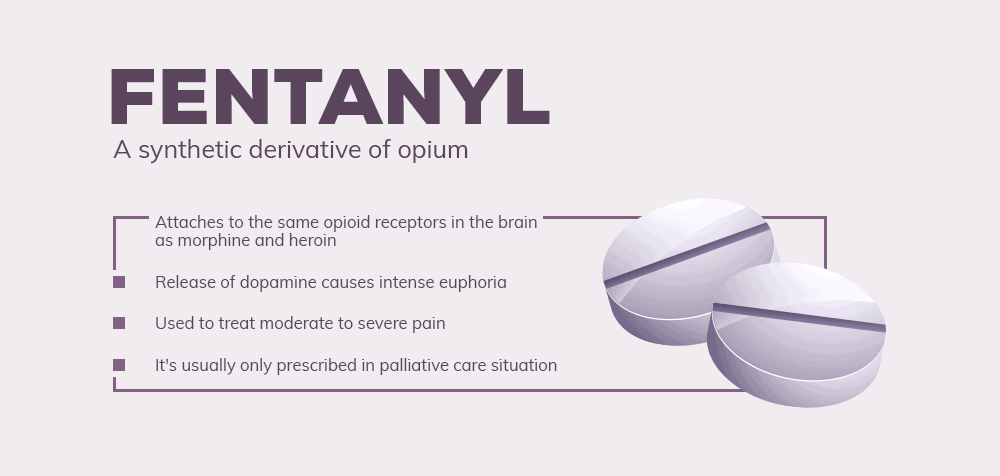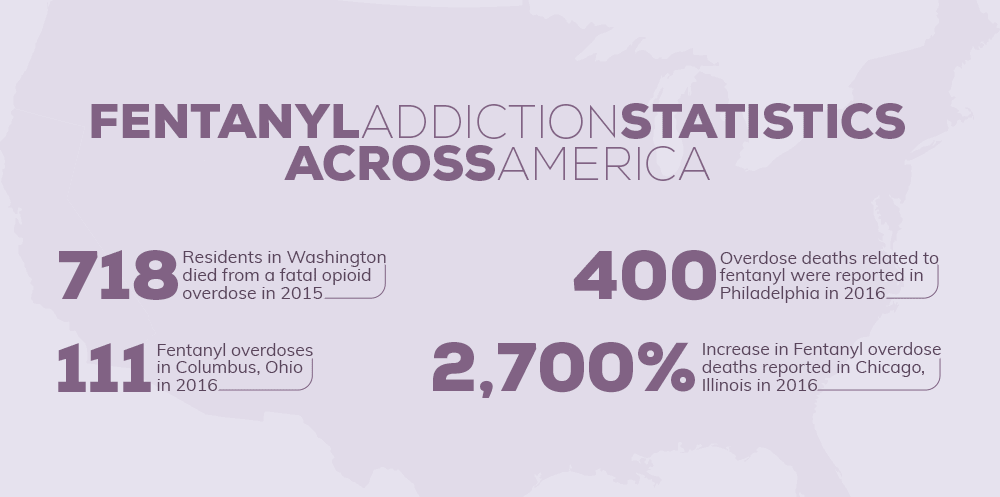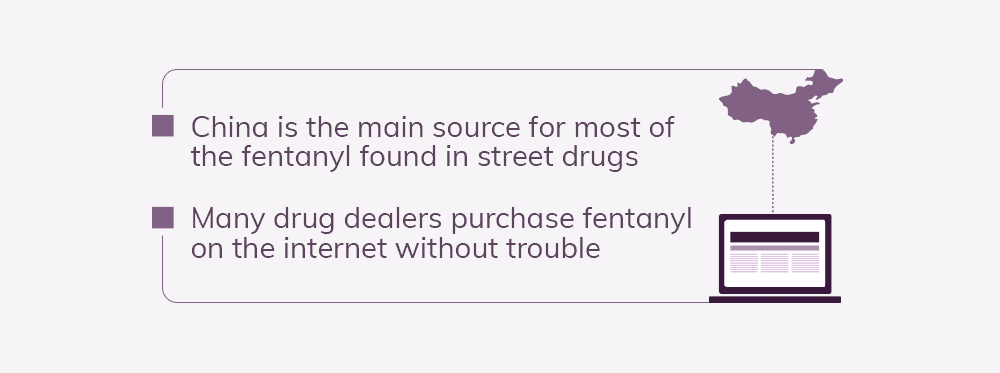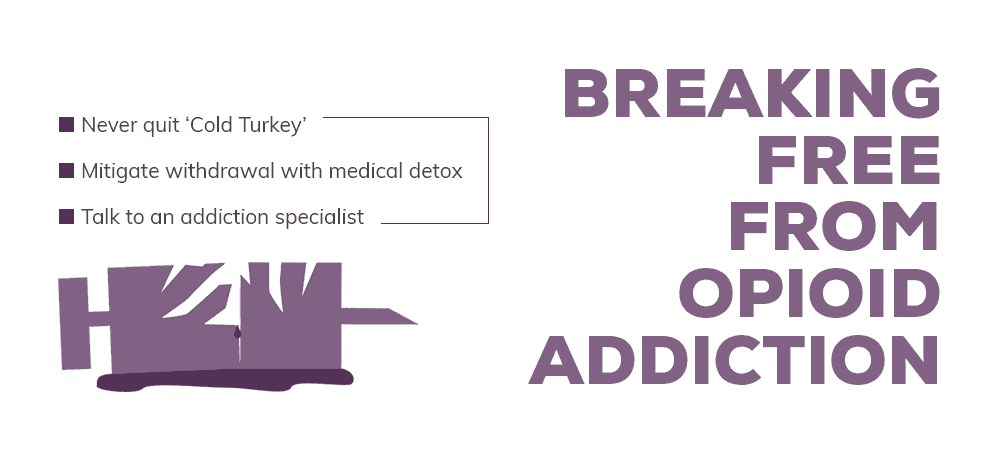Synthetic opioids are taking the lead when it comes to fatal overdoses. From 2010 to 2016, fatal overdoses involving synthetic opioids jumped from 14% to a whopping 46%. Fentanyl drug abuse, in particular, is a big contender. Of the 42,249 fatal overdoses in 2016, 19,413 of them involved synthetic opioids, like fentanyl. Many drug abusers use drugs and alcohol together currently. Of these cases in 2016, synthetic opioids were involved in 80% of overdose death. Synthetic opioids are not only deadly when abused individually. Their effects are often magnified when mixed with other substances. This feature makes them incredibly dangerous. Many drug addicts combine synthetic opioids with alcohol and other drugs. Polydrug use increases their risk of an overdose. It also causes more serious side effects and more serious damage to the body and brain. Opioids are one of the biggest killers. Other than synthetic opioids, prescription opioids were involved in 17,087 fatal overdoses in 2016. Heroin also does a significant amount of damage on society, as it’s responsible for 15,469 fatal overdoses during the same time period. Even prescription opioids can easily become addictive. 80% of heroin addicts claim that they started misusing prescription opioids before abusing to heroin. All of these drugs work in the same way in the brain and affect the same type of neurochemicals in the brain. “A lack of awareness about the potency of synthetic opioids, their availability and the increasing adulteration of the illicit drug supply poses substantial risks to individual and public health,” ~ U.S. researchers from the federal Substance Abuse and Mental Health Services Administration Unfortunately, it doesn’t seem as if America’s opioid epidemic will be slowing down anytime soon. Studies project that opioids may kill about 500,000 Americans in the next decade. To give you a better scope of how big this problem is, consider the following: opioids may kill more Americans in the next decade as HIV and AIDS has killed since the 1980s. This epidemic may affect anyone, from those living in suburban and rural areas to those living in large metropolitan cities. Addiction doesn’t discriminate. This rapidly growing opioid epidemic will likely cost the American economy hundreds of billions of dollars. Unfortunately, the cost of unraveling this epidemic is equally as high.
“Get your loved one the help they need. Our substance use disorder program accepts many health insurance plans, this is our residential program.”
A Drug Deadlier Than Heroin and Other Opioids
Fentanyl is one of the deadliest and most popular opioids around. It’s a derivative of opium or the poppy plant. Fentanyl attaches to the same opioid receptors in the brain, like morphine and heroin. Once it attaches to these receptors, it will flood the brain with dopamine. This influx of dopamine is what causes the intense euphoric feelings and relaxation often associated with the drug. Due to the strength of fentanyl, it is usually only prescribed in palliative care situations. This prescription opioid is used to treat moderate to severe pain. It can be administered through various methods. Some doctors administer the drug intravenously as an anesthetic. Others administer the drug as a patch, a lozenge, a film that dissolves in the mouth or as a nasal spray.  The potency of fentanyl is about 100 times that of morphine or heroin. Many people misunderstand what this means exactly. They think that it means that fentanyl can get a drug user 100 times higher than morphine or heroin. This concept is wrong. So, what does it actually mean? It means that a dose of fentanyl that’s 100 times smaller than a dose of morphine or heroin will have the same effect. Since only micrograms of fentanyl can create the intended effects, those who take just a few micrograms over their limit will experience a serious overdose. Fentanyl is a very strong drug. Most overdoses often end up being fatal. In fact, as little as 2 milligrams is often enough to cause a fatal overdose in most drug abusers. If the drug abuser doesn’t get help immediately, they’ll experience both cardiac and respiratory depression and failure.
The potency of fentanyl is about 100 times that of morphine or heroin. Many people misunderstand what this means exactly. They think that it means that fentanyl can get a drug user 100 times higher than morphine or heroin. This concept is wrong. So, what does it actually mean? It means that a dose of fentanyl that’s 100 times smaller than a dose of morphine or heroin will have the same effect. Since only micrograms of fentanyl can create the intended effects, those who take just a few micrograms over their limit will experience a serious overdose. Fentanyl is a very strong drug. Most overdoses often end up being fatal. In fact, as little as 2 milligrams is often enough to cause a fatal overdose in most drug abusers. If the drug abuser doesn’t get help immediately, they’ll experience both cardiac and respiratory depression and failure.
History of Fentanyl
Although many news headlines have been featuring fentanyl recently, this drug is far from new. It’s actually been around for quite some time. Fentanyl was first developed by Dr. Paul Janssen in 1959. His company, Janssen Pharmaceutica, held the patent for the opioid drug. Many other researchers and medical professionals took note of his invention after seeing what it can do. After all, this prescription drug is incredibly effective. The small molecules can easily bypass the blood-brain barrier and enter the brain. This allows the effects of the drug to kick in quite quickly. By 1960s, the drug was repackaged and reintroduced as an intravenous anesthetic. It was marketed under the brand name Sublimaze. This drug was widely used for many years. It was popular in clinical settings. Nowadays, this form of fentanyl is given to patients when they are in an environment where doctors cannot control their airway. By the mid-1990s, another version of fentanyl was introduced to the market as the fentanyl patch. It was marketed under the brand Duragesic. The Duragesic patch delivered the drug transdermally, so it could be worn on the skin. The active ingredients entered the bloodstream over the course of two to three days. This patch offered long-term pain relief. Due to the effectiveness of these forms of fentanyl, pharmaceutical companies developed other delivery devices. Some popular alternatives include Fentora buccal tablets and the Actiq lollipops. Actiq lollipops, for example, offered fast-acting relief. More recently, pharmaceutical companies have developed a film that patients place under their tongue. This film reduces the risk of misuse. Patients cannot inhale the film or crush it and snort it. This means that they are more likely to use it as prescribed, and are less likely to get addicted to it.
Fentanyl and Its Analogues
Those who have heard of fentanyl will also likely have heard of its analogues. These analogues are synthetic opioids that are either developed by pharmaceutical companies and have legitimate medical use or are sold as designer drugs. So far, scientific and patent literature have described as many as 1400 different analogue compounds. There are probably even more analogues out there. Only several analogues have legitimate medical use among humans. These analogues include sufentanil, alfentanil, and remifentanil. Each of these analogues has a fairly short onset and duration of action. They’re all used in different situations and have unique characteristics. At this moment, sufentanil is the maximum strength fentanyl analogue approved for human use. It has a potency that’s 500 to 1,000 stronger than morphine.
Carfentanil: The Fentanyl Analogue Approved for Veterinary Use
There’s only one fentanyl analogue that has been approved by the Food and Drug Administration (FDA) for veterinary use on large animals: carfentanil. Carfentanil is a synthetic opioid. However, it’s not intended for human use at all. “Exposure to a very small amount of this drug, about the size of a grain of salt or 20 micrograms, could be fatal through inhalation and ingestion. There is also a concern due to the fact that it can be absorbed through the skin,” stated Dept. Chief Tim Farquharson. This drug has a potency that’s about 10,000 times stronger than morphine and approximately 100 times stronger than fentanyl. It’s no joke at all. It’s often used to tranquilize large animals, like horses and elephants. Unfortunately, there have already been reports of carfentanil abuse.
Fentanyl Addiction Statistics Across America
Synthetic opioids are becoming an epidemic in cities all across America. They can be found in both suburban and rural settings to large metropolitan cities. Anyone from college students to professionals can abuse this drug. This is especially true since many people misuse these drugs when they have a prescription for them. Take a look at some of these shocking statistics on how fentanyl addiction has affected cities everywhere in America:
- A 2,700% increase in fentanyl overdose deaths was reported in Chicago, Illinois in 2016
- There were only 13 fentanyl overdoses Columbus, Ohio in 2014, but this quickly rose to 111 in 2016.
- 400 overdose deaths related to fentanyl was reported in 2016 in Philadelphia
- 718 residents in Washington died from a fatal opioid overdose in 2015
The numbers don’t lie. The medical industry and the government watch helplessly as synthetic opioids, like fentanyl, become the number one killer in America. These opioid drugs are even surpassing breast cancer and other deadly diseases and conditions. With that said, it’s time for America to take action and stop opioids from taking so many lives.
“We treat both addiction and co-occurring disorders and accept many health insurance plans. Take a look at our inpatient program.”
Where Is All the Fentanyl Coming From?
A significant amount of illegal opioids in the U.S. comes from China. China is the main source for most of the fentanyl found in street drugs. Week regulations in China have created an environment that allows underground labs to thrive. The laws surrounding fentanyl is pretty lenient, and the government doesn’t do a lot of monitoring on this front. Many drug dealers are purchasing fentanyl on the internet. It’s simple and easy. The drugs enter America through the U.S. Postal Service and often go undetected by Customs and Border Protection. Unfortunately, the tools that our government uses to track illicit substances sent through international mail is outdated and flawed. There’s very little tracking information for international mail bound for the United States. As a result, it’s often difficult to determine which packages need to be inspected. About 154 billion pieces of mail go through the U.S. Postal service each year. Looking for illicit substances in packages is like looking for a needle in a haystack. A lot of fentanyl slip through the cracks and end up on the streets. Efforts are being made to change how international mail is handled. Tighter restrictions and regulations are needed in the fight against opioids. To demonstrate how big of a problem this is, the federal government has subpoenaed Western Union for payment information related to six online sellers they found through the internet. The investigators determined that over $230,000 in payments were made to U.S.-based individuals over 500 financial transactions. This amount is equal to a street value of $766 million worth of fentanyl. Using this information, the investigators also found that seven of the buyers died of a synthetic opioid overdose shortly after receiving a package. Another 18 buyers were arrested for drug-related offenses.
Delivered to Mexico and Smuggled Across the Borders
Another way that fentanyl enters the U.S. is through Mexico. While the illicit fentanyl is still being made in China, it’s shipped to Mexico, where it can be further processed. The opioids are then smuggled across the border. Much like the U.S. Postal Service, U.S. Customs and Border Protection agents have a difficult time finding the illicit drugs. There are 328 land, air and sea ports of entry throughout America. Smugglers use almost all of these ports for their operation. For each package that’s stopped, hundreds of others enter successfully. Once they pass the borders, the fentanyl ends up in the hands of drug dealers. They are then either further processed, used as a cutting agent with other illicit substances or sold as-is. Smugglers have attempted to smuggle so much fentanyl through these ports that the drug testing protocols for it have changed to prevent overdoses. Overdoses can happen from inhalation or absorption through the skin. To combat overdoses, over 15 entry points now have naloxone available at all times. This is to prevent an accidental overdose and to protect the field agents. A Look at Naloxone Naloxone is an opioid-reversing agent. It’s non-addictive and easy to administer. This prescription medication is an opioid antagonist. It blocks opioid receptors in the central nervous system (CNS) so that dangerous opioids are unable to interact with the receptors. This prevents the opioids from overwhelming the body. Once naloxone is administered, its effects will usually kick in within 5 minutes. The protective effects can last anywhere from 30 to 90 minutes.
Proposals for Stopping Fentanyl from Entering America
While it’s not the only way, one significant way that America can fight its opioid epidemic is to stop the import of fentanyl. Many lawmakers agree that U.S. negotiators should sit down with their Chinese counterparts as soon as possible. They should discuss how Chinese-made fentanyl is being trafficked into America. These lawmakers should come up with a proposal for tighter regulations. China’s government does not have strict regulation on the production and exportation of fentanyl. This is why fentanyl can easily enter America. This needs to be stopped as soon as possible. Regulations and laws should be created to stop the export of fentanyl from China. By putting a dent on the supply chain, America may have a fighting chance at stopping this epidemic from growing. In addition to discussing how to impose stricter regulations, changes should be made to the U.S. Postal Service, the system needs to be updated. They should implement a more efficient system. The system should make it easier to determine which packages agents should inspect. The system should require senders to include more personal information with national mail. Knowing the origin of the package, as well as other defining features, may help the system weed out high-risk packages. There’s just so much that can be done on this front. It’s important that we start the discussion on what can be done. If we don’t, synthetic opioids will continue to flood into America and wreak havoc.
Other Ways to Stop America’s Synthetic Opioid Epidemic
Stopping fentanyl from entering America is not the only thing that can be done. Americans should band together to make a difference. The following tactics may help:
- Educate the public, especially the younger generation, about the dangers of opioids. The school system does not place much emphasis on the topic of addiction despite its effect on society. Children should learn about the side effects and dangers associated with these drugs. They should be made aware that there’s an ongoing epidemic happening within the country.
- Make it easier to obtain addiction treatment. Inpatient opioid addiction rehab can cost anywhere from $400 to $900 a day. This amount is unaffordable to many Americans. It’s vital that our healthcare system makes it easier for struggling Americans to get help when they need it. They should have access to the tools needed for a successful recovery.
- Make drugs less dangerous. This mostly applies to heroin. Instead of having heroin addicts purchase the drug from drug dealers, doctors should prescribe prescription heroin instead to current addicts. At the very least, the prescription version of the drug will be pure and will be safe. Illicit drugs are often cut with other substances and can be very dangerous.
- Prevent new generations of opioid users by imposing stricter regulations. Doctors should prescribe opioid painkillers only when it’s absolutely necessary. They should look for and try other alternatives first.
- Address the underlying issues that are behind addiction. It’s time to face the facts and look at why Americans are getting addicted. Treat the underlying issues to prevent opioid addiction and abuse.
We all have to do our part in order to make a difference. It’s vital that we all step up to the plate to prevent the opioid epidemic from growing and affecting more and more people.
What You Can Do at Home
Everyone needs to do his or her part. Although you might not be able to impose stricter regulations on national mail, there are some ways that you can make a difference. They include:
- Discussing opioids with your family members and loved ones. Don’t hesitate to reach out to those who you suspect may be abusing synthetic opioids. Watch out for signs of addiction.
- Educating yourself and your loved ones on addiction. Many people believe that addiction is a choice. It’s not. It’s considered to be a chronic mental illness.
- Reaching out to loved ones. There are plenty of different types of intervention programs out there that can help you voice your concerns in a loving and supportive way.
- Supporting government officials that are trying to make a difference. Every vote counts. By voting in the officials who are keen on creating stricter regulations, you, too, are making a difference.
- Looking for other alternatives with your doctor. While synthetic opioids are effective, there are many other ways to treat pain. If you’re in a situation where you have to choose between synthetic opioids and an alternative, consider looking at the alternatives.
There are many ways that you can make a difference. Don’t sit back and let this horrible disease and epidemic take root. It’s already affected so many Americans. Don’t let the problem fester and worsen. If no one takes action, this epidemic will only become an even bigger problem.
“We accept many health insurance plans. Get your life back in order, take a look at our residential program.”
Begin by Helping Yourself or a Loved One Break Free from Synthetic Opioids
To stop the synthetic opioid epidemic from growing, you need to first make a difference at home. If you or someone you know is addicted to opioids, it’s time to get help from an addiction treatment center. If you’re not sure whether you or a loved one is addicted, check out one of our addiction quizzes to get a better idea. Never withdraw from synthetic opioids alone. The withdrawal symptoms can be dangerous. They should be mitigated with medical detox. Drugs, like Suboxone, can help addicts ease off of the opioids safely and comfortably. These drugs also ease withdrawal symptoms, especially serious ones. If you need any more information, contact one of our addiction specialists today. We can walk you through the addiction recovery process and the various treatment plans we offer. Schedule a tour of our facility to get a better idea of what we can offer you. Having an addiction sucks. We know because we’ve been there. You don’t have to fight an opioid addiction alone. We’re here to help. Also, don’t hesitate to weigh in on the discussion in the comments below. We’d be happy to hear from you! You’ll also be raising awareness to this issue and making a difference by chiming in!
What Did you Think About This Blog?
Give it a Rating!






